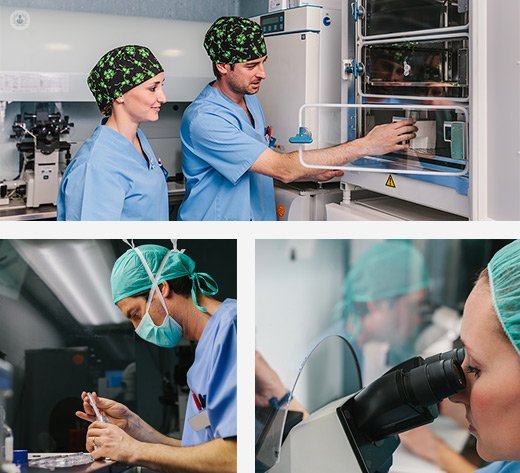Success of artificial insemination
Written by:Artificial insemination is one of the simplest techniques performed in a clinic sterility. It also offers a fairly high pregnancy rates. Artificial insemination can be done with one's partner sperm or donor sperm.
What is artificial insemination?
 Conjugal artificial insemination is to deposit into the uterus of the woman at the time of ovulation a semen sample to which a concentration has been made with better sperm fertilizing capacity.
Conjugal artificial insemination is to deposit into the uterus of the woman at the time of ovulation a semen sample to which a concentration has been made with better sperm fertilizing capacity.
AI aims to improve the chances of achieving pregnancy in two ways:
- Ensures ovulation and even improving. Using a stimulation of the ovaries, to increase the number of eggs that can achieve pregnancy.
- Leave sperm inside the uterus which puts them their easiest target. Thus the points where most sperm are left standing as are the cervix and uterus itself are avoided.
When artificial insemination is recommended?
- When the number of usable sperm to achieve pregnancy is mild or moderately lower than normal.
- When there is only one fallopian tube obstruction.
- When the only problem is a disruption of ovulation.
- When there is no clear factor justifying the difficulty of the arrival of gestation. It is what is known as unexplained infertility.
Phases artificial insemination
- First, ovarian stimulation is performed. This is done by applying some drugs that get ensure that develops at least one follicle (the place where the eggs develop during the cycle of the ovaries), but tried two or three are formed, as well improve the probability of success with a slightly increased risk of multiple pregnancy (7% versus 2% offered by nature).
- During this process scans are done every two or three days to control follicle development to ensure it is ready to ovulate. Another drug that triggers ovulation then applied. Also artificial insemination with natural cycle, that is to enhance this phase without medication, controlling the follicle that usually forms spontaneously. This requires proper function of the ovaries and the chances of success are greatly reduced.
- Just at the moment when we know that ovulation is occurring insemination is done. For it asks the semen sample is processed in order to concentrate better sperm fertilizing capacity.
The already processed sample is introduced into a small plastic tube and placed in the uterus to deposit the semen sample inside.
Artificial insemination does not hurt, it does not cause more discomfort than a routine gynecological examination.
Effectiveness of conjugal artificial insemination
According to specialists in gynecology , with artificial insemination pregnancy rates of 18-20% are achieved, while the chances of success of a couple that has no problem are 25% to maintain relations.
In Clinica Tambre we specialize in this type of treatment. If you want to expand this information do not hesitate to request a free quote so that we can answer your questions.



